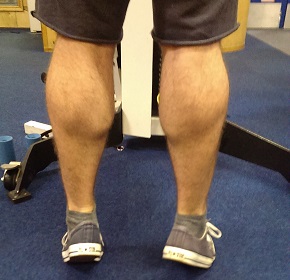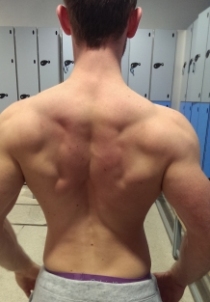5 Ways To Boost Your Calf Development!
Utilize These Methods To Help Grow Stubborn Calves!
Brief Anatomy Of The Calves
The calf complex anatomically comprises of the Gastrocnemius and the underlying Soleus. These muscles are known as the superficial plantarflexors of the ankle joint. Working alongside these muscles to create the motion of ankle plantarflexion are the deep plantarflexors which comprise of Tibialis Posterior, Flexor Digitorum Longus and Flexor Hallucis Longus.
In order to get calves the size of Arnold Schwarzenegger’s Biceps we must focus on training the gastrocnemius and the Soleus. The gastrocnemius has two heads: medial and lateral. It is a bi-articular muscle which means it crosses both the ankle and knee joint. As a consequence of this the gastrocnemius also acts to flex the knee. The Soleus however is only monoarticular and therefore only plantarflexes the ankle. In terms of the fibre type the Soleus is primarily slow twitch whilst the Gastrocnemius is fast twitch.

The 5 Methods
- Exercise Through Full Range Of Motion (ROM): A full ROM consists of the muscle going through a lengthened state to a shortened state. In order to fully lengthen the Gastrocnemius you must have the knees fully extended and the ankle fully dorsiflexed. In this state you should feel a pull in both the muscle and Achilles tendon. This can be achieved when doing a standing calf raise if you place a high enough step under the ball of your foot. In order to shorten the muscle you must fully plantarflex the ankle. In order to achieve a full ROM you may have to sacrifice weight.
- Don’t Neglect Your Calves: Train your calves like you would any other muscle. Allow an hour to train your calves and don’t just stick to the same exercise. Examples of calf exercises are seated calf raises, standing calf raises, donkey calf raises and toe presses. Do supersets, drop sets, rest – pause sets, anything you can that will add variety to your workout and keep stressing the calves.
- Include Time-Under-Tension (TUT): For hypertrophy you need to look at 1-1-3 tempo. The emphasis here is on the explosive concentric and the slow negative. Don’t be afraid to play around with tempo but keep the length of the set between 40 – 60 seconds.
- Vary Weight & Reps: For years there have been discussions whether high reps or heavy weights are best for calf growth. My simple answer is do both. Don’t be afraid to go heavy on some sets as long as form is strict. Apply high reps (15-20) from time to time as this will simulate not only the Gastrocnemius but also the Soleus due to its slow twitch nature.
- Vary Foot Placement: Alternate between a narrow (feet together), wide (shoulder width) and neutral (hip width) foot stance. These positions will put a slightly different stress on the calves which will stimulate growth. Also alternate between turning your toes in and out. When your turn your toes in you activate more of the lateral head of the gastrocnemius and vice versa.
Example Calf Routine:
- 3 - 4 sets per exercise
- Superset the FIRST TWO exercises
- Toe Press
- 6 - 8 reps
- 6 - 8 reps
- Standing Calf Raise (1-1-3 Tempo)
- 15 - 20 reps
- 15 - 20 reps
- Wide Stance Standing Calf Raise (1-2-3 Tempo)
- 10 - 12 reps
- 10 - 12 reps
- Neutral Stance Calf Raise (1-1-3 Tempo)
- 8 - 10 reps
- 8 - 10 reps
- Donkey Calf Raise (Bodyweight)
- 2 sets- As Many Reps As Possible
- Rest 15 seconds MAX between sets
If this article helped you and you'd like to learn more ways to maximize your results, SIGN-UP for the Platinum Membership today!






